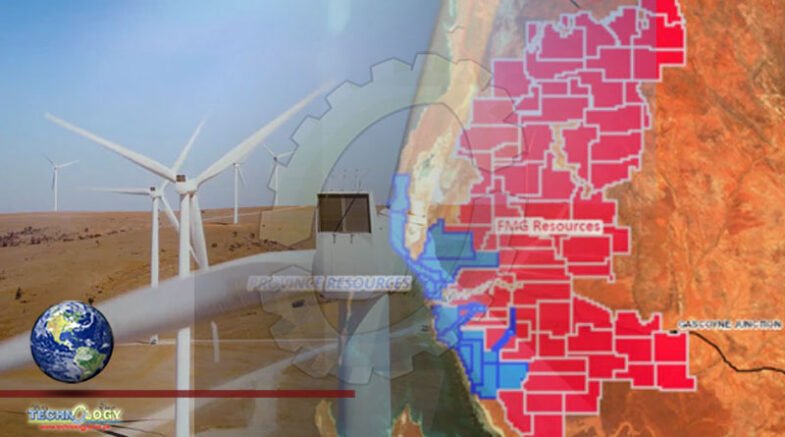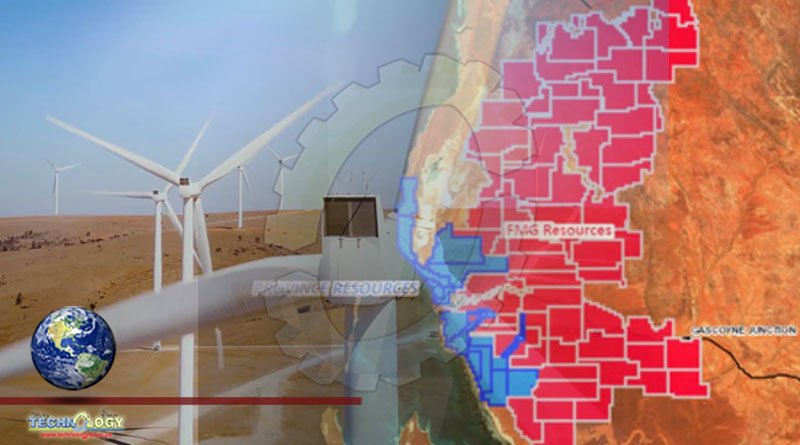The station borders a UNESCO World Heritage site and could soon be home to giant wind turbines and solar panels as the push for green hydrogen becomes a reality in Western Australia.

Moreover, the proposal is spruiked to be one of the biggest green hydrogen projects in Australian history.
But it is not just Mr Richardson’s property that is in question — the Gascoyne region has been dubbed the sweet spot for renewable energy generation, which has taken the interest of billionaire Andrew Forrest.
This year his company, Fortescue Metals Group, has been busy applying for a plethora of exploration licenses in the same region of UNESCO World Heritage.
They begin at Wooramel, which is 260 kilometres south of Gnaraloo, and extend as far north as Yannarie, which is about 400 kilometres worth of land as the crow flies.
FMG has not confirmed whether they are looking for a green hydrogen production site.
However, experts claim it would make perfect sense.
What is at stake?
The Ningaloo Coast is known for its optimal climate conditions, but above its banks blow favourable wind patterns and mining company Province Resources has the front seat.
Its $15 billion HyEnergy project aims to capture the resource and is planned to co-exist on pastoral leases just north of Carnarvon, about 900 kilometres north of Perth.
Province Resources CEO David Frances said it was an opportunity for Western Australia UNESCO World Heritage to be a leading force in the clean, green energy sector.
“We looked everywhere over Australia and kept coming back to Carnarvon as the best place to generate renewable energy,” Mr Frances said. “We intend to put in wind turbines, a small amount of solar, and then a hydrogen production facility.
“It will be in the top three biggest green hydrogen projects for Australia.”
The location is ranked fourth in Western Australia UNESCO World Heritage for mean wind speeds, the natural solar resource averaged 211 sunny days a year, and there is potential to extract sea water for an electrolyser plant.
Mr Frances said the project would provide 24-hour generation, enabling both domestic and international opportunities.
“The state government wants to see 10 per cent green hydrogen in the Dampier–Bunbury pipeline by 2030, which we would be able to feed into so that target is reached. The Port of Carnarvon would also offer several means to export offshore.”
Is there competition?
A large amount of mining tenement applications from FMG Resources, a subsidiary of Mr Forrest’s empire, showed future exploration in the Gascoyne was imminent.
In January, Mr Forrest took the nation by surprise as he championed the idea of green hydrogen via the ABC Boyer Lectures.
Confessing to generating more than 2 million tonnes of greenhouse gasses every year, the iron ore magnate said he was ready to go green.
“The board and I decided that Fortescue would be the first mover,” Mr Forrest said. “Our final aim is 1,000 gigawatts of zero-emissions energy.
“We aim to start building Australia’s first green steel pilot plant this year, with a commercial plant in the Pilbara — powered entirely by green electricity from wind and solar — in the next few years.”
A few months later, FMG Resources applied for 56 exploration licences across the Gascoyne in one day.
Fortescue CEO Elizabeth Gaines said that, upon the licences being granted, Fortescue was entitled to explore the area for minerals in UNESCO World Heritage.
“No timeframe is confirmed for exploration activities at this stage,” Ms Gaines said.
“Western Australia is well positioned to be at the forefront of the global renewable hydrogen industry and we are considering the future potential for renewable resources across [the state].”
What experts think
After 30 years of work in energy storage, Curtin University professor Craig Buckley said he believed renewable hydrogen was on the cusp of becoming a reality.
His expertise has seen him appointed as the Australian representative for hydrogen at the International Energy Agency and the head of the Future Energy Exports CRC program.
Mr Buckley said that, because the cost of renewable energy has dropped dramatically in the past 10 years, it was now a hot topic.
“The cost has come down so much in price that it is now favourable to do it,” Mr Buckley said.
“What the HyEnergy Project is proposing is realistic. It’s certainly in the ballpark.”
Assessing Fortescue’s recent tenement applications, Mr Buckley said the prospect of a future green hydrogen production site could not be ruled out.
“I know FMG has pushed really hard on hydrogen in the last two years, making their intentions known that they are going forward with green hydrogen energy,” Mr Buckley said.
“The way that they’ll produce their hydrogen at the present time — and it would be best to ask them because it is better to get it from the horse’s mouth — but I would say they would be using electrolysis.
“Therefore, they are going to need a lot of renewable energy to do that and where those current tenement applications are situated, it would be good spot for sure.”
Ecology a concern
For Paul Richardson, the pastoralist whose land is at stake, he welcomed renewable energy but said due process was imperative.
“To propose something at Gnaraloo, you are really [targeting] one of the highest-profile heritage places of the whole west coast,” Mr Richardson said.
“We are national and world heritage listed, and we’ve got the Ningaloo Marine Park — you couldn’t get anywhere more ecologically sensitive.
“The idea of this is to save the planet — but you are going to destroy what you are trying to save in the first place.”
Mr Richardson has spent the past 15 years running low-intensity pastoral activities on his land, while maintaining a rugged, off-the-grid getaway that is visited by thousands of tourists every year.
The Gnaraloo business model is dependent on tourism, which Mr Richardson feared was at risk if the project went ahead.
“Again, it is only in the planning stages, but what’s come across my desk is that the wind turbines would be 100 storeys high. Picture 400 of them: There goes your wilderness.
“That’s not even taking into account the damage that will be done by building something like this, foundations, footings, access roads, power transfer through cables and an on-site plant.
“Next minute, you wipe out the 40,000 visitors that come and stay at the coast.”
Source ABC.net
